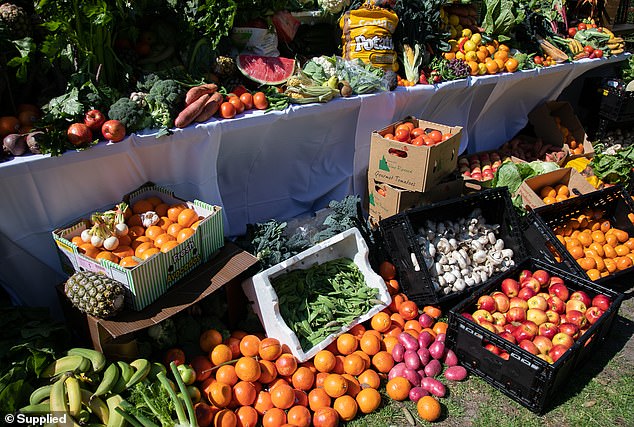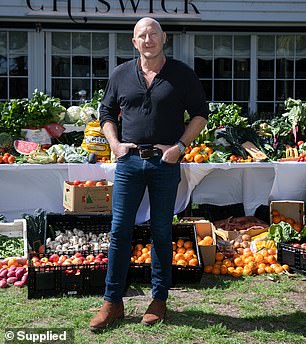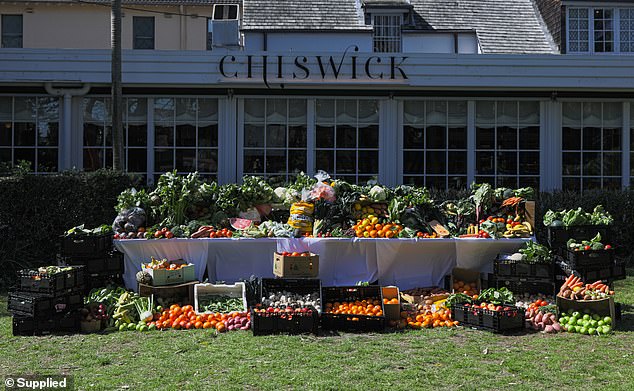Australian households unwittingly waste up to $3,000 each year by throwing away food scraps – more than the equivalent of a return flight from Sydney to Europe.
The research carried out by Food innovation in Australia It comes as a surprise as the cost of living continues to put households under financial pressure.
In a bid to tackle the current problem of food waste and reduce the alarming figure, celebrity chef Matt Moran shared his secrets with FEMAIL on how to repurpose leftovers and save money when shopping.
His ‘farm to fork philosophy’ is something Matt incorporates into his high-end Sydney restaurants by following what’s in season and sourcing local produce along with ‘celebrating the farmer’.
“You may visit the dentist a couple of times a year, but you’re dependent on a farmer three times a day,” Matt said.
The Sydney restaurateur said it was “inspiring” to see more people becoming aware of where their food comes from and how to reduce their grocery bill.
He supported growing his own ingredients to reduce costs and boasted about the free app Life jacketwhich is designed to make mealtimes less stressful, more sustainable and inspire home cooks.
Every year, Australian households waste up to $3000, or 312kg per person, by throwing away unwanted food. Pictured: 780kg of food dumped on the lawn of Chiswick restaurant in Sydney to highlight Australia’s alarming food waste crisis

In a bid to tackle the current problem of food waste and reduce the alarming figure, celebrity chef Matt Moran shared his secrets with FEMAIL on how to repurpose leftovers and save money when shopping.

Pictured: Matt Moran
1. BUY SEASONAL PRODUCTS
One of the best ways Australians can save money in the kitchen is by buying seasonal produce, Matt revealed.
“When you choose fruits and vegetables at their peak, you not only get the best flavors but also the best prices,” he said.
‘Seasonal produce is more plentiful and often costs less because it doesn’t need to be imported or grown out of season.’
Right now, seasonal fruit types include bananas, avocados, blueberries, and pineapples, while top seasonal vegetables for spring include asparagus, beets, and broccoli.
“There’s also something really romantic about buying seasonal produce. Take mangoes for example. When they come back into season, they’re more than just a fruit; it’s a time we look forward to. That first bite of a perfectly ripe mango is a taste of summer!” Matt added.
He also encouraged Australians to “embrace the seasons” and “let them guide your menu”.
2. THINK CREATIVELY
Matt’s number one tip for repurposing leftovers is to think creatively about how to transform them into other dishes.
“Don’t just reheat; think of leftovers as the basis for new dishes,” he said.
‘For example, roasted vegetables from last night’s dinner can be turned into a vibrant soup or a hearty salad.’
If you have leftover meat, such as roast chicken, lamb or beef, consider making a pie, sandwich or pasta dish.
“Instead of searching for recipes that require buying more ingredients, simply enter what you have at home into the Saveful app,” Matt added.
“It will generate meal ideas based on ingredients you already have. It’s a great way to make the most of what you have and make your meals interesting.”

Matt encouraged Australians to buy seasonal produce and think creatively when preparing meals. The money saved could allow you to travel to Europe and back.
3. SHOP YOUR KITCHEN FIRST
Before visiting the supermarket, it is essential to first review the ingredients you already have in your refrigerator, freezer and pantry to save money and avoid double purchasing of products.
This also means you are less likely to make impulse purchases at the grocery store.
Matt described it as a win-win scenario.
“You’re saving money by reducing food waste and making sure you’re making the most of what you have,” she said.
“Plus, it’s a step towards greater sustainability, which is always a good thing.”


